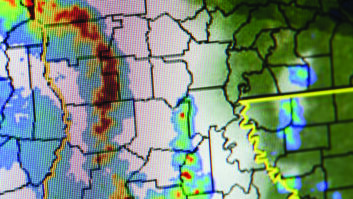
After the January false missile alert in Hawaii — and myriad government agencies began the process of researching the missteps — a new report has offered two succinct, specific recommendations aimed at improving the overall effectiveness of the IPAWS warning system.
Radio World spoke with Ed Czarnecki, the head of strategy and government affairs for Monroe Electronics/Digital Alert Systems about the proposed changes and what it may mean for broadcasters.
Radio World: Give us a rundown on the news with IPAWS.
Ed Czarnecki: The DHS Office of the Inspector General recently issued a concise report on FEMA’s Oversight of the Integrated Public Alert & Warning System (IPAWS) that highlights two recommended changes for IPAWS. IPAWS has accepted these recommendations, which stem in large part from the Hawaii missile alert incident.
FEMA is adding these recommendations as requirements to the IPAWS Memoranda of Agreement (MOA) between FEMA and state, local, tribal and territorial alert originators.
[Read: Two New Proposals May Change IPAWS Alerting Rules]
One accepted recommendation is to require software developers to include certain “critical functions” in their emergency alerting software used to send CAP alert messages into IPAWS. Three key functions are the ability to preview or cancel an alert, the ability to alert the user when the software license expires, and offering more intuitive user interfaces. This recommendation does not directly impact EAS manufacturers or broadcasters, per se.
However, since Digital Alert Systems also provides IPAWS alert origination tools, this is of course something we are looking at closely. Our DASEOC alert originator does already provide alert preview, and indicates to the user in advance when a software license or digital certificate expires.
Radio World: One of the criteria mentioned in the report had to do with cancelling an alert, which was an issue with the Hawaii false missile alert.
Czarnecki: The function of canceling an alert gets a bit trickier, at least for EAS. For mobile WEA alerts, the CAP “cancel” function can stop the transmission of the alert message in the area. However, with EAS, once an EAS message is broadcast over the air, it can’t be retracted. So this recommendation likely will at some point result in additional guidance from FEMA and/or the FCC on what EAS devices [should do] if the CAP “cancel” function is extended to EAS as well. If the alert has not been transmitted yet, would a CAP cancel simply stop the transmission of the pending EAS transmission? If the alert has already been transmitted, would a CAP “cancel” trigger the EAS device to auto-generate a message meant for the public (e.g. “the alert you just heard was in error, please disregard”)?
So this recommendation could result in some more discussion between government and industry on how best to implement a cancellation in EAS.
Radio World: Would you say that the proposed changes on the canceling an alert will be the trickiest to implement in terms of EAS devices?
Czarnecki: To be specific, it’s not clear that the proposed changes involve cancelling an EAS alert. The context of the discussion has been more about cancelling an active or errant WEA alert, which technically can be supported today.
If (a big if) the desire was to have the ability to cancel an EAS message, then this will indeed be significantly trickier. One challenge is what an EAS device should do to “cancel” a CAP message if it has already aired (such as autogenerate some message). The potentially bigger challenge is how to cancel a tone (AFSK) based EAS message, since these do not have all the parameters that are in a CAP message. So, this topic can’t just involve FEMA — it has to involve the FCC as well.
Radio World: What can you tell us about the second recommendation, which deals with training?
Czarnecki: The second recommendation is to require software developers to “provide training on system functionality and capabilities to alerting authorities.” Digital Alert Systems strongly supports this recommendation. In fact, we have offered user and administrator training, and set-up support, from the very beginning for alerting authorities. We also have video based training for the alert origination process, and are working on other interactive training tools. We should also see some detailed recommendations on the need for training that will be issued by another advisory panel.
Radio World: Can you talk about those interactive training tools?
Czarnecki: Back in 2016, Digital Alert Systems launched an online learning tool designed to educate customers quickly and easily on the setup, configuration and operation of DASDEC and One-Net Emergency Alert System (EAS) devices. This toolset already contains basic information needed by alert originators for the administration and maintenance of their DASEOC alert originators. However, we’re looking at expanding the training framework to more broadly encompass the CAP and EAS functions for alert originators. The existing e-learning tool was made available 24/7 free-of-charge for customers, and merely requires a simple one-time registration to access the contents. It is available via the Digital Alert Systems website, under Resources > V3 Online Tutorial.
Radio World: Have you heard from any customers on concerns about the proposed changes?
Czarnecki: No, actually, we have not heard much from broadcast or cable customers about the proposed changes. Again, these changes mostly revolve around WEA and alert originators, at least initially. We have had a few inquiries from emergency managers about the changes, and feature requests we’ll be looking to bring into the next version of our alert origination system.
Radio World: It’s clear that the industry needs to keep its eye out for new iterations, yes?
Czarnecki: These recommendations highlight the fact that EAS and public warning capabilities are ever-evolving and changing.










